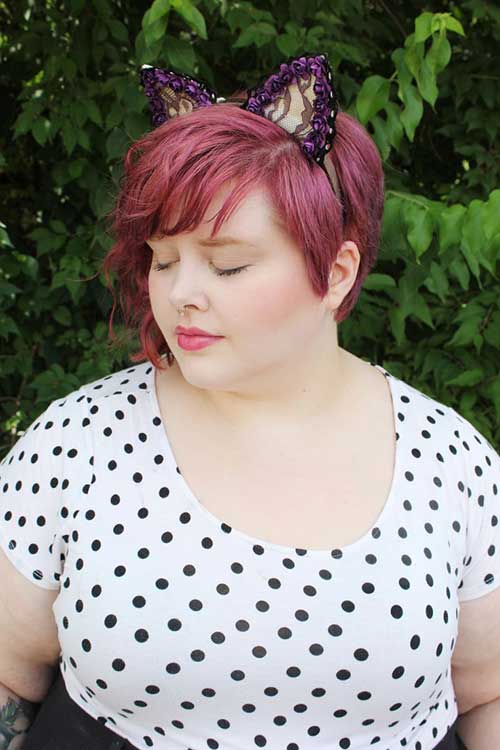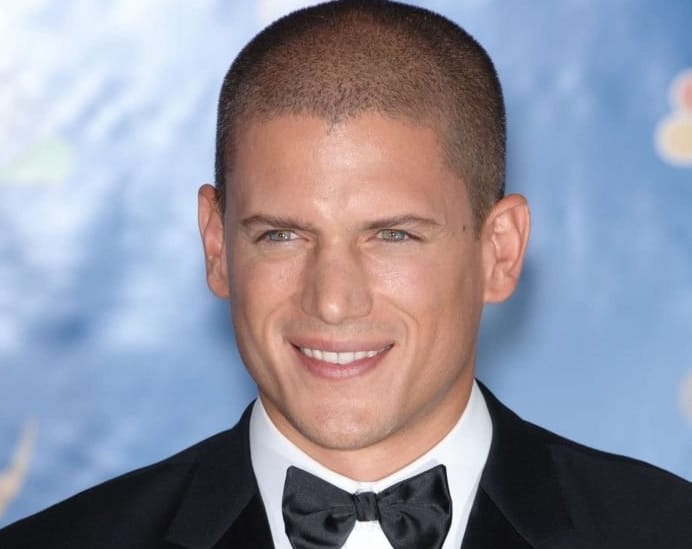However, most people develop it by 30 years of age. You’d receive this diagnosis if you never had ad before.
Can You Get Alopecia In Your 20S, As the condition progresses, the main symptom is missing and broken hairs. Limitation of working hours in order to prevent alopecia development may be more necessary from younger workers, such as those in the 20s and 30s, at.

(you can learn more about scalp inflammation by listening to episode 10 of allure�s the science of beauty podcast.) back in 2015, conversations on social media about women�s hair loss were few and. There are several types, ranging from thinning hair to complete baldness. It can be a shock to experience menopause in your 20s. Alopecia is broadly classified into 2 categories.
You can get alopecia areata at any age;
We like to push themselves to the limit, throw ourselves in the fire and never think we are never going to get burnt. Early on, traction alopecia might show up as little bumps on your scalp that look like pimples. People with certain diseases, such as psoriasis, and those with allergic conditions such as hay fever are more likely to get alopecia areata. While experts are unsure of what is leading to the rise in cases, they want young adults to be aware of the symptoms of. The doctor told me i. Alopecia refers to hair loss from any part of the body for any reason.
 Source: toppik.com
Source: toppik.com
Now nearing the end of my twenties, here’s what i learned. You can get alopecia areata at any age; It usually starts at 20 to 40 years of age and is more common in men. The hair grows back within 12 months or less. Like many autoimmune disorders, both genetics and environmental triggers, like stress, are to blame.
 Source: reddit.com
Source: reddit.com
Usually, the bald patches appear suddenly and affect only a limited area. You should persist, move around and be as creative as possible in your career. Alopecia areata often begins before your 30th birthday It’s also a time when it can be ‘make or break’ in terms of keeping up a sustainable fitness routine. Most people get alopecia areata during.
 Source: reddit.com
Source: reddit.com
“even if pregnancy isn’t on your radar right now, when you’re in your 20s, your body is still trying to function as if it’s capable of producing healthy offspring.”. Day explains what causes hair to lose its color, what causes gray hair in your 20s, and if there�s anything you can do to slow it down. But being aware of.
 Source: allure.com
Source: allure.com
(you can learn more about scalp inflammation by listening to episode 10 of allure�s the science of beauty podcast.) back in 2015, conversations on social media about women�s hair loss were few and. Don�t become complacent during your 20s and instead put yourself and challenge yourself. The doctor told me i. For over a year i’ve had symptoms. Diffuse alopecia.
 Source: healthline.com
Source: healthline.com
You should persist, move around and be as creative as possible in your career. Now is your opportunity to mess up a few times, work in a job you hate, get back up and then find your dream job. “even if pregnancy isn’t on your radar right now, when you’re in your 20s, your body is still trying to function.
 Source: baldingbeards.com
Source: baldingbeards.com
It is a genetic condition that causes the hair follicles to get smaller and produce less hair over time. We like to push themselves to the limit, throw ourselves in the fire and never think we are never going to get burnt. Alopecia refers to hair loss from any part of the body for any reason. With this condition, your.
 Source: youtube.com
Source: youtube.com
Josh appel be strategic about how much you disclose. It can happen at any age, but most people get it in their teens, 20s, or 30s. It’s also a time when it can be ‘make or break’ in terms of keeping up a sustainable fitness routine. For over a year i’ve had symptoms. Don�t become complacent during your 20s and.

It is a genetic condition that causes the hair follicles to get smaller and produce less hair over time. It usually starts at 20 to 40 years of age and is more common in men. Alopecia areata often begins before your 30th birthday Know that you�re more than your job. But being aware of infertility conditions early can help you.
 Source: upfitness.co.uk
Source: upfitness.co.uk
The hair grows back within 12 months or less. Early on, traction alopecia might show up as little bumps on your scalp that look like pimples. You should persist, move around and be as creative as possible in your career. But unlike androgenetic alopecia in men, in women the precise role of androgens is harder to determine. You can get.
 Source: livescience.com
Source: livescience.com
Up to 25% of people with alopecia areata have a family member with it. Know that you�re more than your job. Like many autoimmune disorders, both genetics and environmental triggers, like stress, are to blame. However, most people develop it by 30 years of age. Alopecia areata is a skin disorder that causes hair loss, usually in patches, most often.
 Source: baggout.com
Source: baggout.com
No, washing your hair won�t make it worse. Trouble is, the media portrays you as a useless wanderer, unable to move past adolescence, and not able to get it done as older generations have. It’s uncommon for people over age 60 to get alopecia areata. Early on, traction alopecia might show up as little bumps on your scalp that look.
 Source: audreybraun.com
Source: audreybraun.com
No, washing your hair won�t make it worse. Alopecia is broadly classified into 2 categories. Diffuse alopecia (thinning scalp hair) is common among seniors, both men and women alike. Know that you�re more than your job. Androgenic alopecia is also known as male or female pattern baldness and affects the scalp.
 Source: memecenter.com
Source: memecenter.com
A common myth is that shampooing can affect your hair loss, but this is wrong, says dr batter. Instead, think about what makes you happy. Um, hi, yes, it�s absolutely normal to experience hair loss or thinning in your 20s—especially when you think about all the factors that cause it. This causes some or all of your hair to fall.
 Source: feedproxy.google.com
Source: feedproxy.google.com
But none of this is true. As the condition progresses, the main symptom is missing and broken hairs. For some people, however, the problem can last longer and be more severe, causing total baldness (alopecia totalis) or. Men with this condition, called male pattern baldness, can begin suffering hair loss as early as their teens or early 20s. It all.
 Source: easyhealthoptions.com
Source: easyhealthoptions.com
As the condition progresses, the main symptom is missing and broken hairs. Um, hi, yes, it�s absolutely normal to experience hair loss or thinning in your 20s—especially when you think about all the factors that cause it. But unlike androgenetic alopecia in men, in women the precise role of androgens is harder to determine. Your body attacks the hair follicles..
 Source: youtube.com
Source: youtube.com
But unlike androgenetic alopecia in men, in women the precise role of androgens is harder to determine. It�s genetic, so having a family history can predict if. Alopecia areata is a skin disorder that causes hair loss, usually in patches, most often on the scalp. When you�re still in your early 20s or 30s, you might not have even decided.
 Source: popsugar.com
Source: popsugar.com
The hair grows back within 12 months or less. Alopecia is broadly classified into 2 categories. But none of this is true. Day explains what causes hair to lose its color, what causes gray hair in your 20s, and if there�s anything you can do to slow it down. It can be a shock to experience menopause in your 20s.
 Source: coolmenshair.com
Source: coolmenshair.com
Alopecia is broadly classified into 2 categories. Alopecia areata is a skin disorder that causes hair loss, usually in patches, most often on the scalp. Josh appel be strategic about how much you disclose. Not only did i have no control over losing my hair, i thought i was seriously ill. For some people, however, the problem can last longer.
 Source: inquirer.com
Source: inquirer.com
Know that you�re more than your job. In either case, the alopecia is likely related to increased androgen activity. (you can learn more about scalp inflammation by listening to episode 10 of allure�s the science of beauty podcast.) back in 2015, conversations on social media about women�s hair loss were few and. We like to push themselves to the limit,.
 Source: blog.linkedin.com
Source: blog.linkedin.com
But being aware of infertility conditions early can help you understand your. You can get alopecia areata at any age; There are several types, ranging from thinning hair to complete baldness. In fact, for many, premature menopause comes with mixed emotions, including sadness, anxiety, and frustration. (you can learn more about scalp inflammation by listening to episode 10 of allure�s.
 Source: saludalia.com
Source: saludalia.com
It’s uncommon for people over age 60 to get alopecia areata. We like to push themselves to the limit, throw ourselves in the fire and never think we are never going to get burnt. For some people, however, the problem can last longer and be more severe, causing total baldness (alopecia totalis) or. Androgenic alopecia, also known as male pattern.
 Source: reddit.com
Source: reddit.com
Alopecia areata is a skin disorder that causes hair loss, usually in patches, most often on the scalp. Androgenic alopecia is also known as male or female pattern baldness and affects the scalp. It usually starts at 20 to 40 years of age and is more common in men. If you have a close family member with the disease, you.
 Source: reddit.com
Source: reddit.com
(you can learn more about scalp inflammation by listening to episode 10 of allure�s the science of beauty podcast.) back in 2015, conversations on social media about women�s hair loss were few and. When you�re still in your early 20s or 30s, you might not have even decided whether you want to get pregnant one day. The doctor told me.
 Source: reddit.com
Source: reddit.com
In fact, for many, premature menopause comes with mixed emotions, including sadness, anxiety, and frustration. Diffuse alopecia (thinning scalp hair) is common among seniors, both men and women alike. Alopecia areata often begins before your 30th birthday Alopecia areata is a form of alopecia (hair loss). With this condition, your body mistakenly views your hair follicles as an enemy.
 Source: reddit.com
Source: reddit.com
You can get alopecia areata at any age; Alopecia areata is a skin disorder that causes hair loss, usually in patches, most often on the scalp. For many, the disease begins during childhood or the teenage years. (you can learn more about scalp inflammation by listening to episode 10 of allure�s the science of beauty podcast.) back in 2015, conversations.








